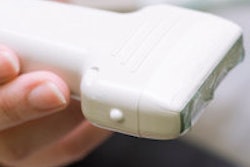Dr. Islamiat Ego-Osuala and colleagues explored the use of adjunctive ultrasound screening in states that have begun implementing breast density notification laws. Their study included women who received handheld high-resolution whole-breast ultrasound between January 2013 and March 2014.
During the study time frame, 42,341 screening mammograms were performed in 36,523 women. Of these, 3,044 women underwent 3,167 screening ultrasound exams; 74% had dense breasts and 61% had average risk for breast cancer, according to the researchers.
Of the 3,167 screening ultrasound exams, 82.5% were categorized as BI-RADS 1 or 2, 8.7% as BI-RADS 3, and 8.7% as BI-RADS 4 or 5. Eighteen biopsies were avoided because lesions were no longer visualized or because they were reassessed as benign. In all, 259 lesions were biopsied, and the majority of these, 96.1%, were benign, while five were high-risk lesions and five were cancers.
Ten lesions were surgically removed, and six of these were determined to be cancer (three were invasive ductal carcinoma and three were ductal carcinoma in situ), which yielded a positive predictive value of 2.3% for screening ultrasound, Ego-Osuala's group found. The modality's additional cancer detection rate was 0.06%.
Though supplemental whole-breast ultrasound found cancers that mammography did not, the rate of detection in this study was lower than in previous studies, leading the group to conclude that more research needs to be done to pinpoint the population of women who may benefit from breast ultrasound.



















